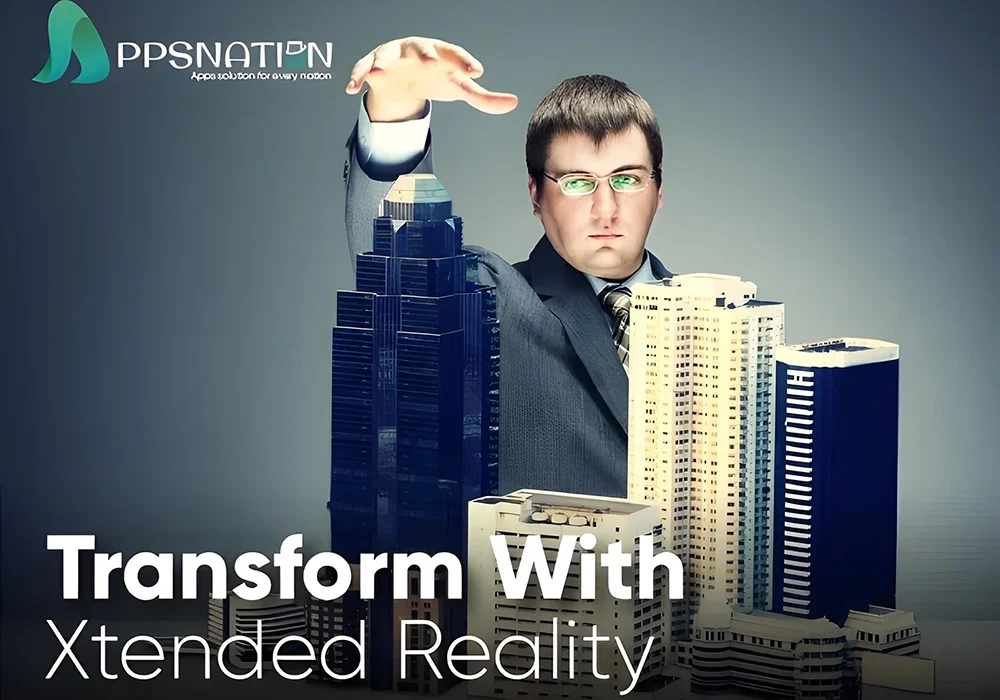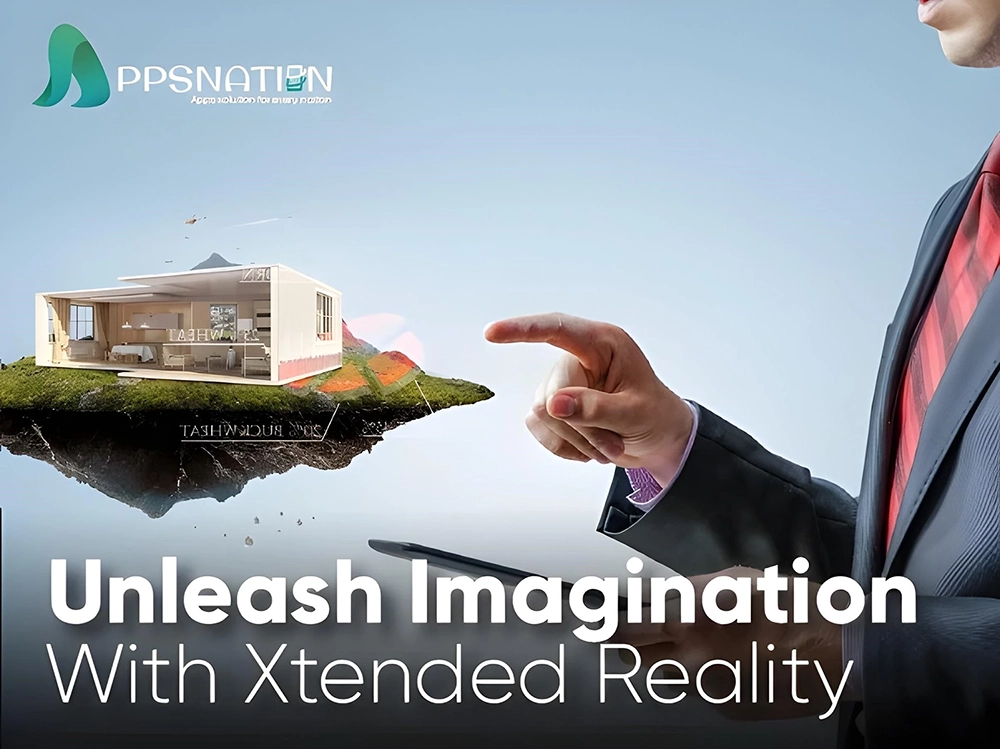In today’s digital age, businesses are constantly seeking innovative ways to enhance their products and create immersive experiences for their customers. One such cutting-edge technology that has been gaining popularity is Extended Reality (XR). From gaming to marketing, XR has the potential to revolutionize the way we interact with products and services. In this article, we will explore what Extended Reality is, its various applications, and how businesses can leverage this technology to transform their products and captivate their audiences.
Table of Contents
| 1 | What is Extended Reality (XR)? |
| 2 | Understanding the Types of Extended Reality
|
| 3 | The Advantages of Extended Reality
|
| 4 | Transforming Product Design and Prototyping
|
| 5 | Revolutionizing Product Visualization
|
| 6 | XR in Marketing and Advertising
|
| 7 | XR in E-Commerce
|
| 8 | Enhancing Customer Support and Training
|
| 9 | The Future of XR and Product Transformation
|
| 10 | Future Trends in VR Development |
| 11 | Conclusion |
| 12 | Frequently Asked Questions (FAQs) |
What is Extended Reality (XR)?
Extended Reality (XR) refers to an umbrella term that encompasses various immersive technologies such as augmented reality (AR), virtual reality (VR), and mixed reality (MR). XR blurs the lines between the physical and digital worlds, enabling users to interact with both real and virtual elements simultaneously. This technology offers a new dimension of engagement and opens up exciting possibilities for businesses across industries.
Understanding the Types of Extended Reality
Augmented Reality (AR)
AR overlays digital content onto the real world, enriching the user’s environment with virtual elements. It enhances user experiences by providing additional information, interactive features, and visualizations related to the physical surroundings.
Virtual Reality (VR)
VR immerses users in a fully simulated digital environment, completely detaching them from the real world. Users can explore and interact with this virtual space through specialized devices like VR headsets.
Mixed Reality (MR)
MR combines aspects of both AR and VR, allowing users to interact with digital content while maintaining awareness of the real world. This blending creates seamless and interactive experiences that blend the best of both worlds.
The Advantages of Extended Reality
Enhanced Customer Engagement
XR creates captivating and interactive experiences that captivate customers and keep them engaged for longer periods. Whether it’s a virtual showroom or a gamified marketing campaign, XR offers a unique way to connect with the target audience.
Personalized Experiences
With XR, businesses can offer personalized experiences that cater to individual preferences and needs. For instance, AR-based shopping apps can provide tailored product recommendations based on user preferences.
Increased Product Understanding
XR enables customers to visualize and interact with products in a realistic way, leading to better product understanding. This, in turn, boosts confidence in purchasing decisions.
Boosting Sales and Conversions
By providing engaging and informative experiences, XR can significantly increase sales and conversions. VR-powered virtual try-ons, for example, reduce the hesitation in online purchases.
Transforming Product Design and Prototyping
Streamlined Design Process
XR technology streamlines the product design process by allowing designers to create and modify virtual prototypes rapidly. This iterative approach enhances creativity and reduces development time.
Real-Time Collaborations
With XR, teams can collaborate in real-time, regardless of their geographical locations. This enhances communication and ensures everyone involved in the product development is on the same page.
Efficient Prototyping and Testing
XR enables designers to test virtual prototypes before physical production, reducing costs and identifying potential issues early in the design phase.
Revolutionizing Product Visualization
Virtual Try-Ons
XR allows customers to virtually try on products, such as clothing or makeup, before making a purchase, enhancing the online shopping experience.
Virtual Showrooms
Virtual showrooms enable customers to explore and interact with products in a simulated retail environment, offering a dynamic and engaging shopping experience.
Interactive Product Catalogs
XR transforms traditional product catalogs into interactive visualizations, providing customers with a more immersive browsing experience.
XR in Marketing and Advertising
Immersive Brand Storytelling
XR allows brands to tell compelling stories in an immersive way, forging deeper connections with consumers and leaving a lasting impact.
Interactive Product Demos
Instead of traditional product demonstrations, XR enables customers to interact with virtual versions of products, increasing engagement and product understanding.
Gamified Marketing Campaigns
Gamified marketing campaigns powered by XR make marketing initiatives more fun and interactive, increasing customer participation and brand loyalty.
XR in E-Commerce
Augmented Reality Shopping
AR shopping apps enable customers to virtually try on products in their own environment before making a purchase, reducing returns and increasing customer satisfaction.
Virtual Fitting Rooms
Virtual fitting rooms provide an innovative way for customers to try on clothes virtually, making the online shopping experience more enjoyable and convenient.
Virtual Product Previews
XR enables customers to preview products in 3D before buying, giving them a better understanding of the product’s features and functionalities.
Enhancing Customer Support and Training
Virtual Support Assistants
XR-powered virtual support assistants provide real-time assistance, guiding customers through troubleshooting processes and answering queries effectively.
XR-Enabled Training Modules
Businesses can leverage XR to create interactive and immersive training modules that enable employees to learn in a practical and engaging manner.
Remote Assistance
XR facilitates remote assistance, where experts can guide customers or employees through complex tasks and procedures from afar.
The Future of XR and Product Transformation
Integration with AI and IoT
The integration of XR with Artificial Intelligence (AI) and the Internet of Things (IoT) will unlock new possibilities for data-driven and context-aware experiences.
XR and Personalization
XR will continue to evolve, providing even more personalized experiences based on user preferences, behavior, and historical data.
XR Ethical Considerations
As XR becomes more prevalent, businesses must address ethical concerns, such as privacy, data security, and the potential for addiction to immersive experiences.
Conclusion
Extended Reality (XR) possesses transformative capabilities that can revolutionize products and the way businesses interact with their customers. By leveraging AR, VR, and MR, businesses can enhance customer engagement, boost sales, and streamline product design and prototyping. XR’s applications in marketing, e-commerce, and customer support further reinforce its significance in today’s competitive landscape.
As XR continues to evolve, it is crucial for businesses to stay at the forefront of innovation and embrace this transformative technology to deliver unparalleled experiences to their customers.
FAQs
Q: What is Extended Reality (XR)?
Extended Reality (XR) serves as an encompassing term, encompassing Augmented Reality (AR), Virtual Reality (VR), and Mixed Reality (MR). It combines real and virtual elements to create immersive and interactive experiences.
Q. How does XR benefit businesses?
XR benefits businesses by enhancing customer engagement, providing personalized experiences, increasing product understanding, and boosting sales and conversions.
Q: How can XR be used in e-commerce?
XR can be used in e-commerce for augmented reality shopping, virtual fitting rooms, and virtual product previews, making the online shopping experience more immersive and interactive.
Q: What role does XR play in marketing and advertising?
XR enables immersive brand storytelling, interactive product demos, and gamified marketing campaigns, making marketing initiatives more engaging and impactful.
Q: What does the future hold for XR?
The future of XR involves integration with AI and IoT, providing even more personalized experiences, and addressing ethical considerations related to privacy and data security.



